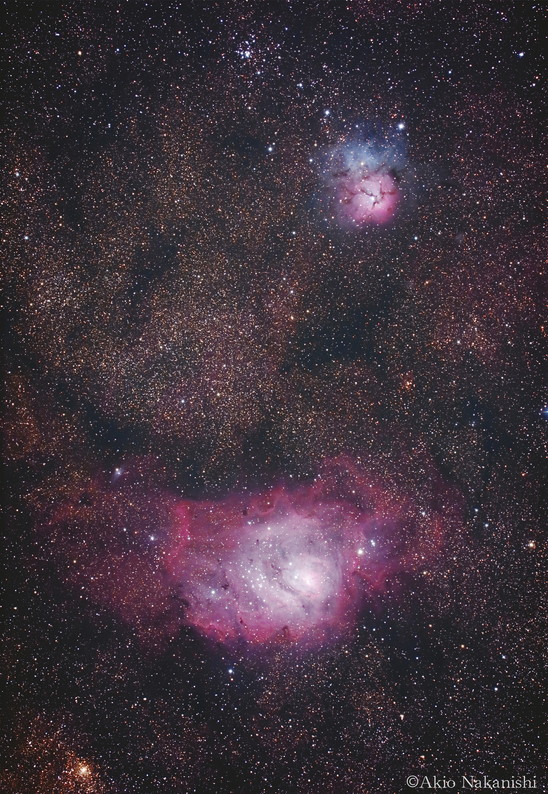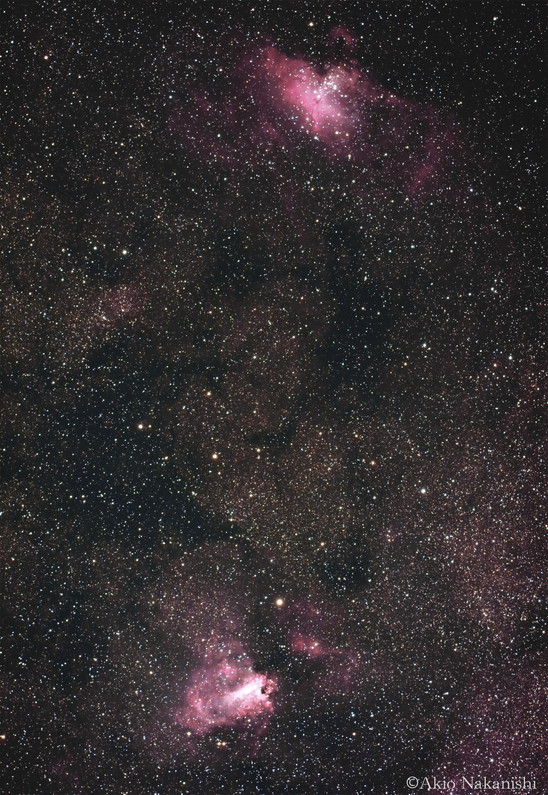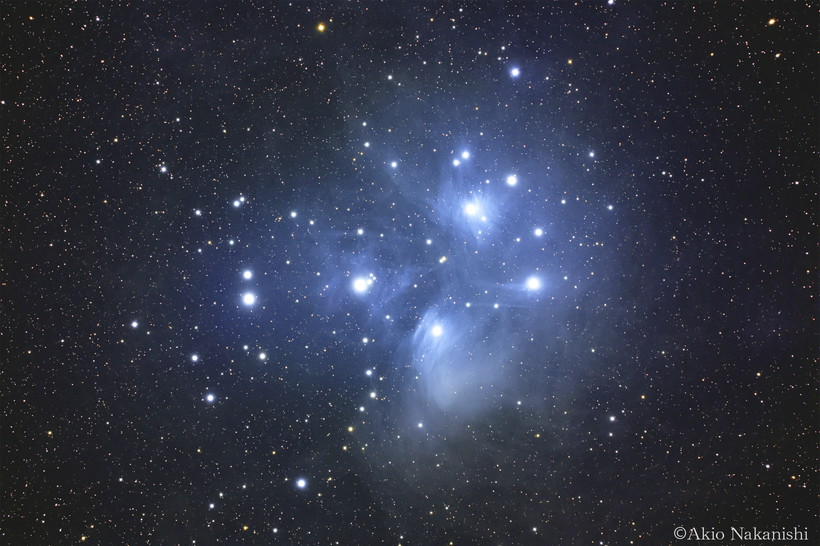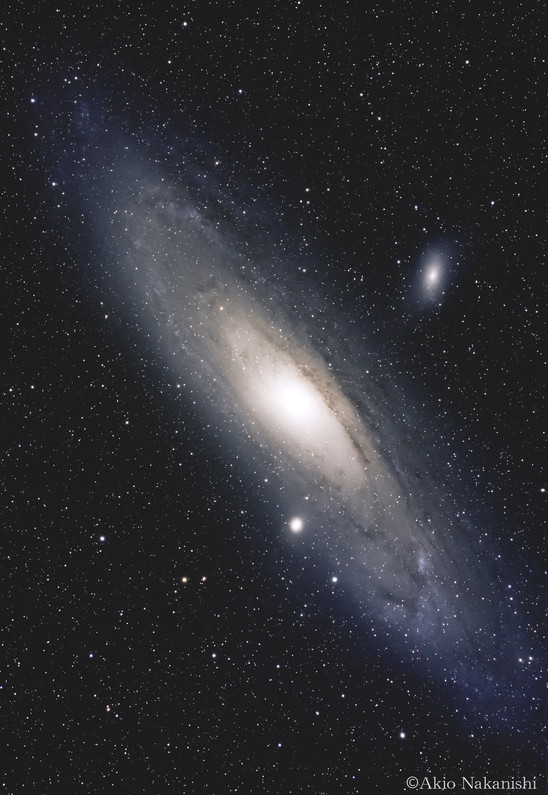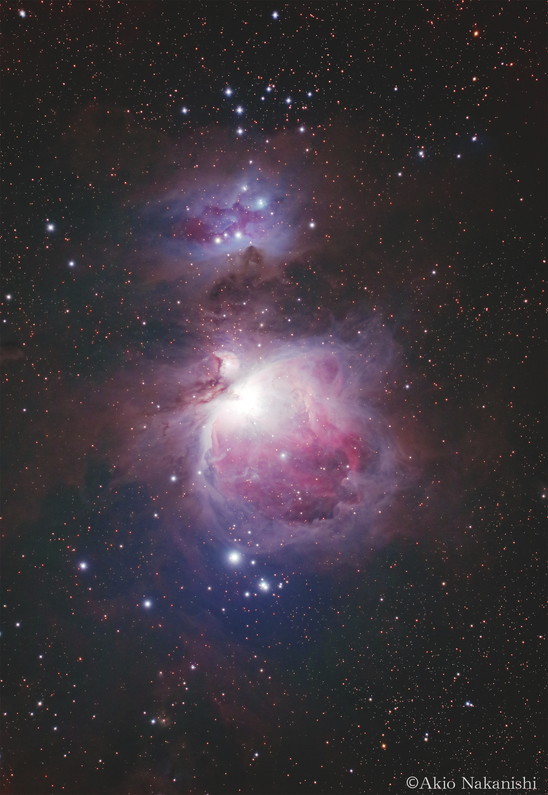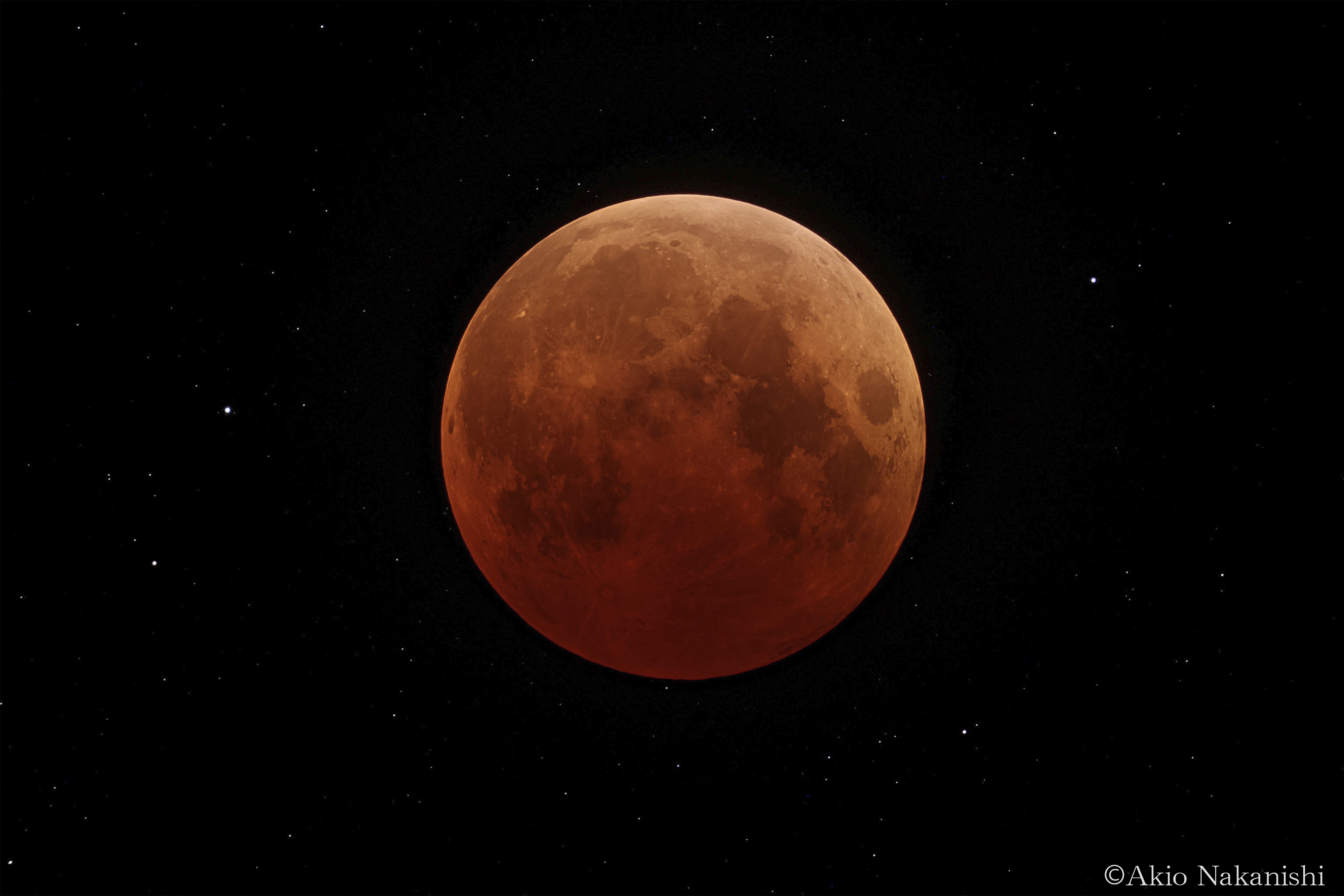Vixen | Producer of optics from astronomical telescopes and binoculars
The appeal of an SD103SII and an SD115SII told by Akio Nakanishi.
2023.04.20

Refracting telescopes with a two-element objective lens using fluorite or an extra-low dispersion glass are simple in structure that can produce a performance of a high level if not designed for too much brightness by focal ratio.
That would be not much expensive, excellent in visual observation, and has good performance in photography. It would become an astronomical telescope of good quality that you can recommend to everyone, from beginners to experts.
Among them, I especially recommend an SD series of refracting telescopes using the SD lens.
(i.e., FPL53, an extra-low dispersion glass similar to fluorite in characteristics, has excellent achromatic performance.)

The SD series has three models: S81 with an 81mm aperture, S103S with a 103mm aperture, and S115S with a 115mm aperture.
With a combination of an SD Flattener HD Kit, you can flatten an image plane to enlarge a good imaging field of view. Besides, you can brighten the image by shortening a focal length by combining an SD Reducer HD.
These items are available optionally. When shooting nebulae and star clusters, you will get satisfactory star images in the entire imaging field of view. Among the many categories of astrophotography, beautifully photographing nebulae and star clusters that are almost invisible to the naked eye is rewarding by using the capability of an astronomical telescope and a camera.
I believe this is the best part of astrophotography.
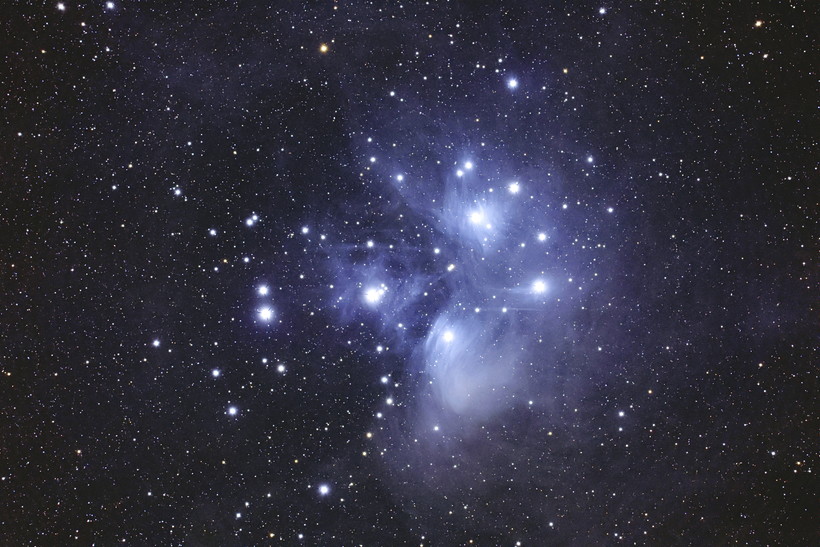
However, when I used an optical tube from the SD series for photographing the nebulae and star clusters, I noticed a problem annoying me.
With the SD series, stars look emitting three dark radiate streaks of light when stars with a certain degree of brightness exist in the imaging field of view.
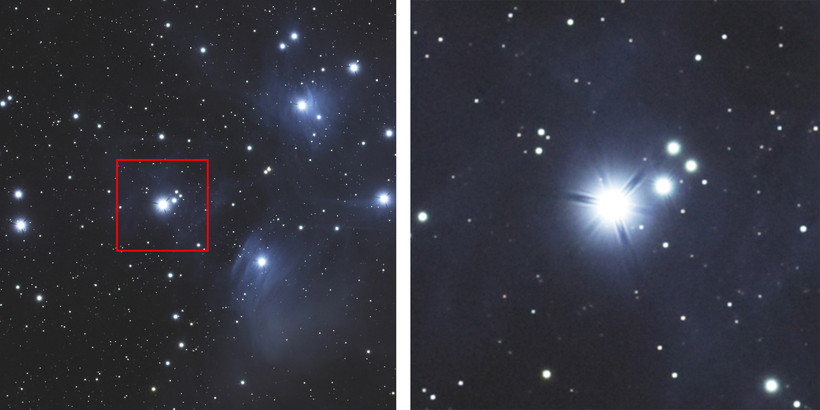
That is caused by three extremely flat tin foils, which hold the space of a doublet objective lens constant, protruding from the inside of the objective cell and interfere with the pass of light.
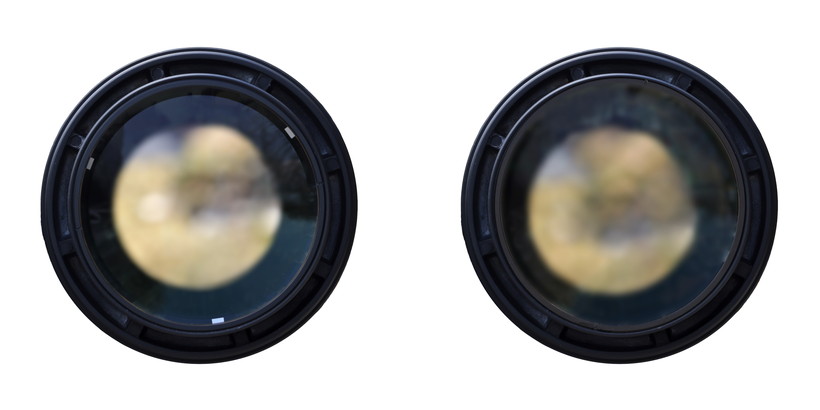
SD103S vs SD103SII
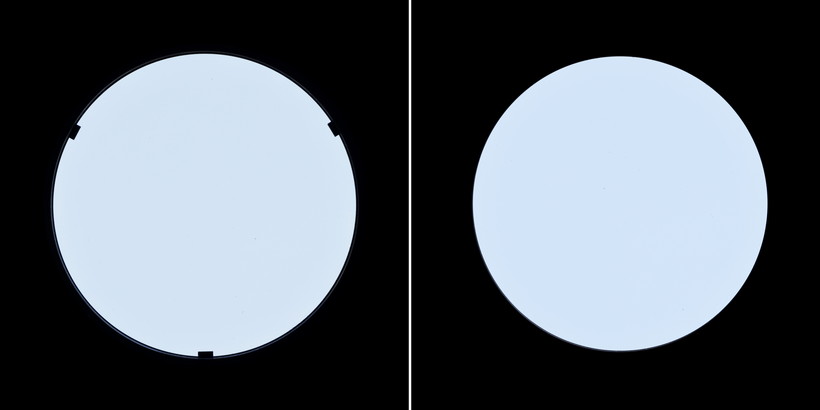
Objective lenses seen from the eyepiece side
In the SD103S, it is obvious that the three tin foils protrude into the optical path.
On the other hand, in the SD103II, you find no protrusion in the light path, and you can photograph stars in a circular shape perfectly.
Using the tin foils to retain the space of the doublet objective lens is not only to the SD series but also is typically seen in many telescopes of other manufacturers.
It's not wrong, but it discouraged me a little concerning the images of nebulae and clusters photographed. Actually, you can eliminate this phenomenon simply by narrowing down the aperture of the objective lens so that you can hide the tin foils.
However, that is a waste of the ability of your telescope as the effective aperture is narrowed down. A fundamental solution was to apply a method different from retaining the lens spacing with three tin foils.
First, the SD80S was improved to become an SD81SII. Instead of the tin foils, a spacer of a very thin ring is used to retain the space between the two lenses. And that way, it can hold a bundle of the entering light to be a circle. That effect was visible clearly, and I could obtain star images similar to those obtained by narrowing down the aperture.
So, I was looking forward to when the same improvement to the SD81SII would be expected for the higher models SD103S and SD115S. And this time, those have newly appeared as SD103SII and SD115SII finally.
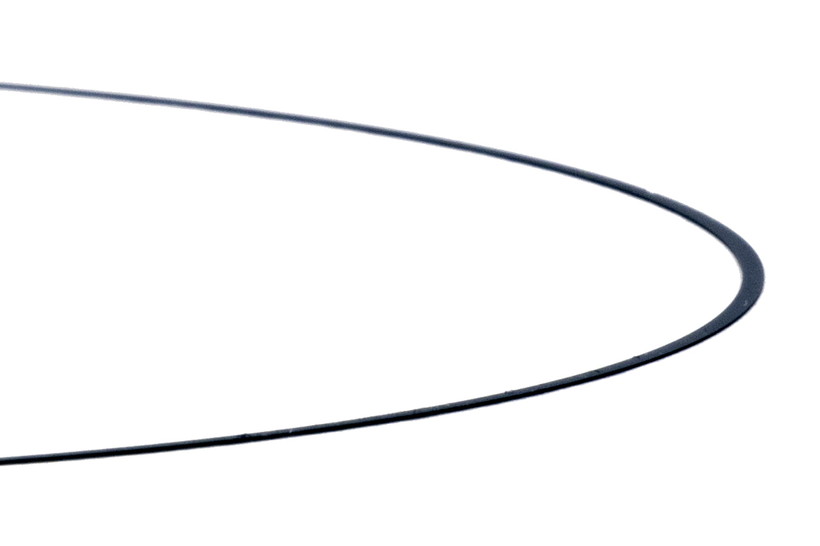
A story about a spacer ring by a product planner at Vixen
We achieved a spacer ring with a thickness of 0.25 mm by applying a process called etching to a thin film of stainless steel.
From the time of the improvement to the SD81SII, we have been considering adopting the spacer ring for the SD103S and SD115S.
In the SD103SII and SD115SII, larger spacer rings were what we needed, and we faced difficulties in production. After trials and errors, we finally reached commercialization this time.
The effect of the improvement was remarkable. The image of stars has turned to the shape of a circle similarly, as you see with the SD81SII.
A thing of vignetting seems to be recognized slightly at the edges of the imaging field of view, but this is another issue. Overall, the stars in an imaging field of view are very sharp at the center and its adjacent.
I suppose you would feel secure in choosing the SD series even if your main interest is taking photograph of nebula and star clusters.
By clicking on the image,you can access a higher quality version of the data.
M8 the Lagoon Nebula and M20 the Trifid Nebula, taken with SD115SII, SD Reducer HD kit, EOS Ra.
M16 the Eagle Nebula and M17 the Omega Nebula taken with SD103SII, SD Reducer kit, EOS Ra.
By way of example, I shot the Pleiades, Messier 45, in the constellation Taurus, and I could recognize the effect by comparison.
In the SD103S, the stars appear to accompany three black streaks, but in the SD103SII, the stars show no lack of a round image.
Shooting objects like M45 Subaru, seen best from autumn to winter, will reveal the improvement is more effective.
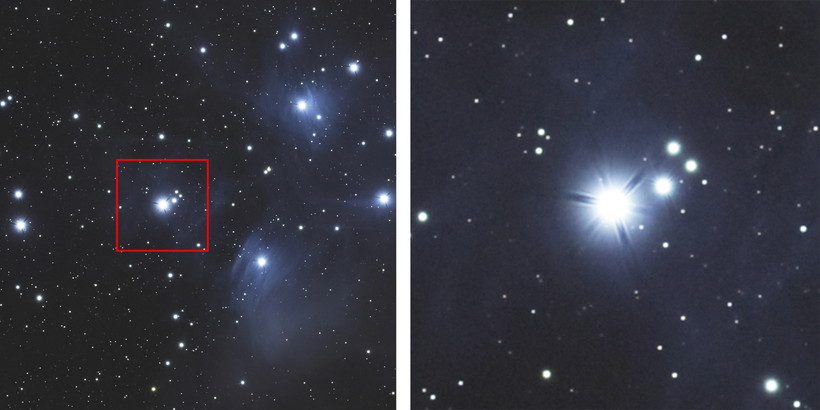
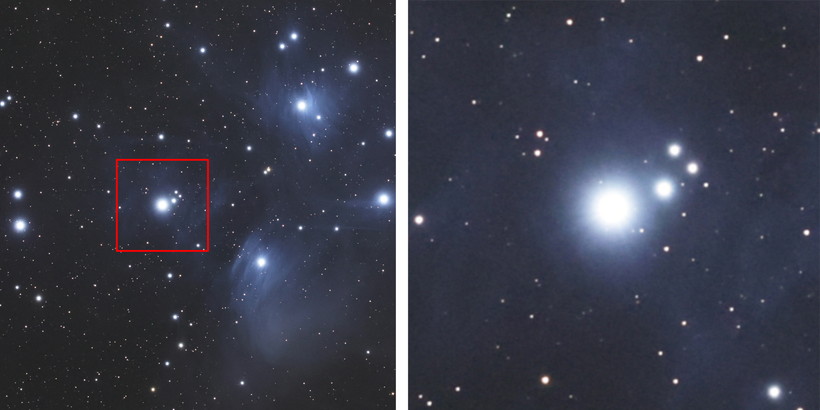
M45, the "Pleiades", taken with SD115SII, SD Flattener, EOS R3.
By the way, when you take photographs of nebulae and star clusters with an optical tube of high optical performance like the SD series, I would definitely want to use an equatorial mount of high performance.
As robust models with high-precision tracking capability are more likely to produce better results, I would recommend the equatorial mounts such as SXP2, AXJ (Even better if it comes with built-in optional encoders.), or AXD2.
You can not only increase the success of shooting a celestial object while tracking, but also those mounts allow for focusing easier as you can damp down vibration.
As a result, you can do your shooting work efficiently. I hope that you will enjoy taking photos of nebulae and star clusters as well as enjoying observations for various celestial objects with the new SD series.
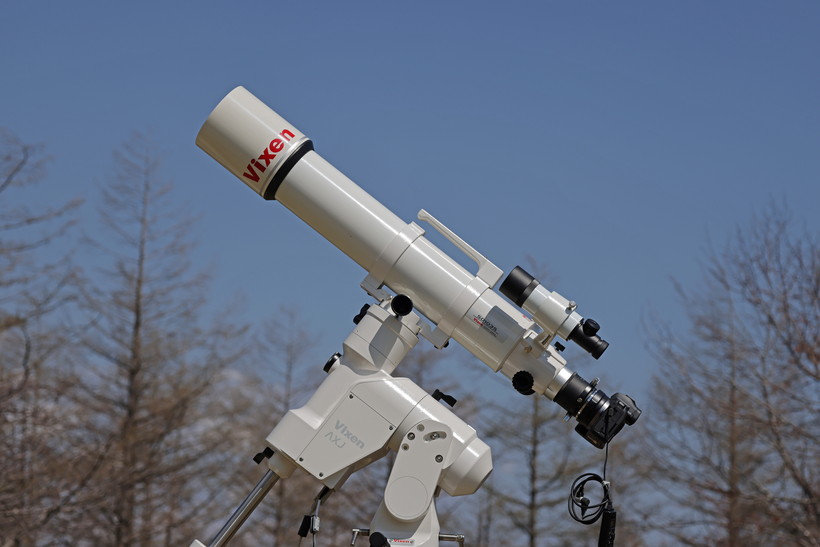
"Recommended optional accessories for the new SD series"
-
SD Reducer HD Kit
I would like to list an SD Flattener HD Kit and an SD Reducer HD first, as optional accessories that you would definitely have.
In a simple doublet objective lens, if stars go away from the center of an imaging field of view, the stars appear larger and elongate by the influence of field curvature.
The Flattener compensates for this aberration, and the Reducer shortens the focal length to make an object image brighter. -
Dual Speed Focuser
Either shooting nebulae and star clusters or other celestial objects, focusing through a telescope is one of the most difficult things in astrophotography. When adjusting focus generally, it is necessary to turn the focus knob forward or backward very finely to detect a focal point.
The Dual Speed Focuser eases this operation. Since it greatly reduces the rotation of the focus knob, you can adjust the focus comfortably. It is highly effective for shooting not merely nebulae and clusters, but also the moon and planets. -
AXJ Equatorial Mount
To take full advantage of the SD series with high optical performance, you would consider combining it with an equatorial mount of high quality if your budget is allowable. If the mount has high rigidity, it will prevent the telescope from shaking with a little wind, or touch by hand.
Having highly accurate tracking will allow you to take photographs of nebulae and star clusters with fewer failures. By using good equipment, you surely would enjoy photographing celestial objects.
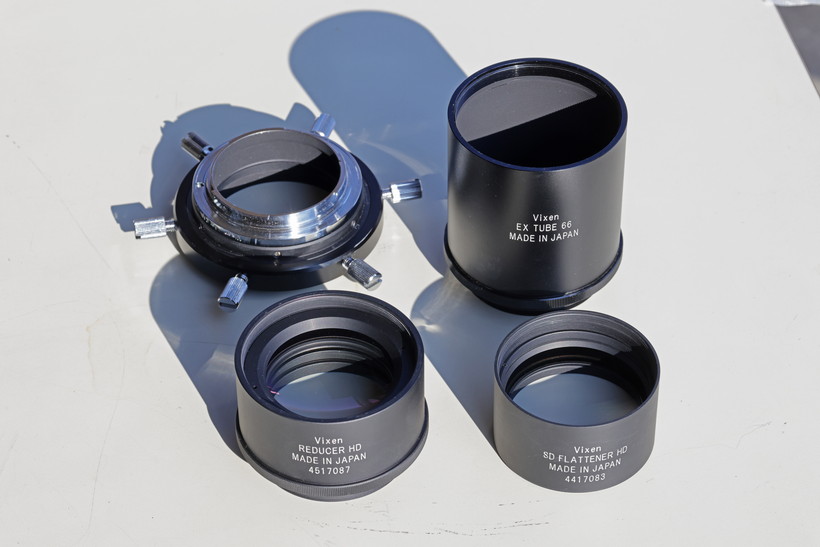 SD_Re&HD
SD_Re&HD
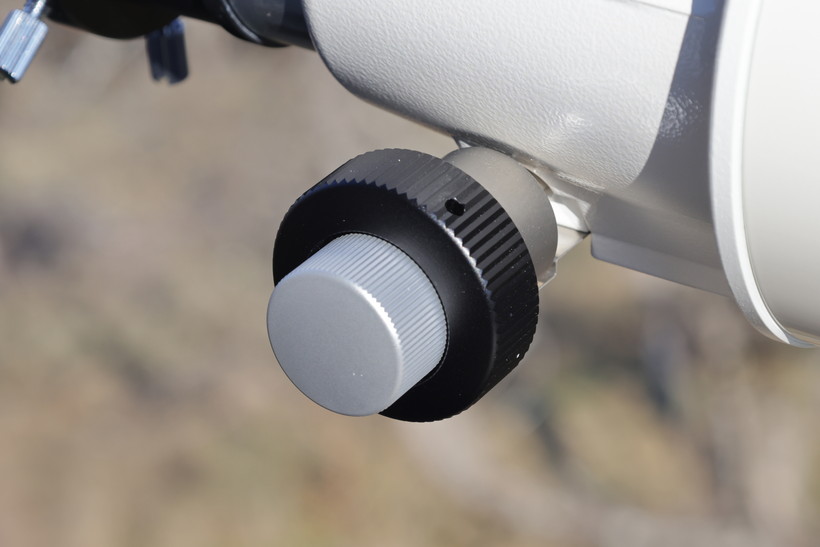 DSF
DSF
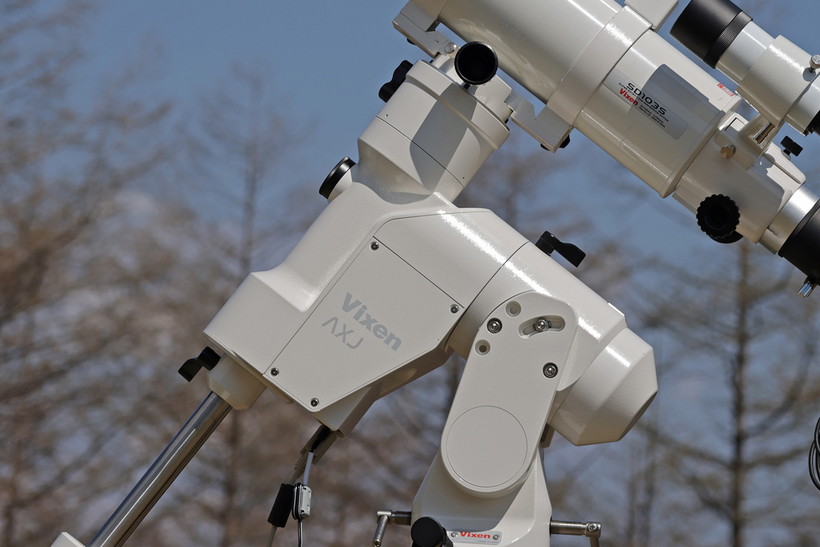
About Akio Nakanishi
Akio Nakanishi is a brisk photographer and one of the few professional astrophotographers in Japan who was born and grew up in Itabashi, Tokyo, a town that shone with optics and print.
His great strength is he can handle everything, from not only taking photos of ordinarily starry skies and starscapes of cities, but also doing photos of nebulae star clusters and even searching for a new celestial object. With his rich experiences and skills in photographing celestial objects, he discovered four faint asteroids at 20-21st magnitudes.
Consequently, he has strict eyes for evaluating astronomical equipment.

Gallery
M31, the "Andromeda Galaxy", taken with SD115SII, SD Flattener, EOS R3.
M42, the "Great Orion Nebular", taken with SD115SII, SD Flattener, ES Ra.
Lunar Eclipse (November 8, 2022 Japan), taken with SD115SII, EOS R5.
Share this page
